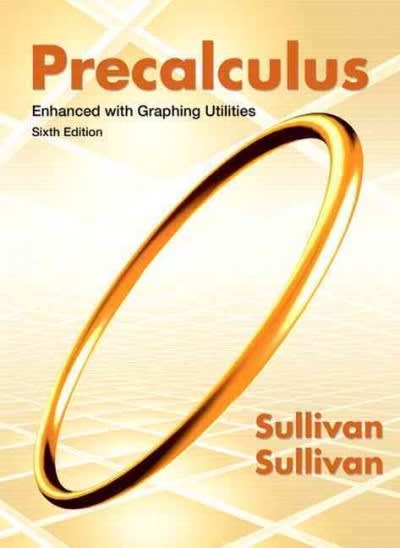Question
A taxi switches back and forth between three distinct areas. At whatever point it arrives at area 1, it stops and invests an irregular energy
A taxi switches back and forth between three distinct areas. At whatever point it arrives at area 1, it stops and invests an irregular energy having mean 6 preceding acquiring another traveler, I= 1, 2, 3. A traveler entering the taxi at area I will need to go to area j with likelihood Pik an opportunity to head out from I to j is an irregular variable with mean mi. Assume that 11 = 1, = 2.13 = 4. P12 = 1. Pr = 1, P31 = I - P32, m = 10,/1/3 = 20, no = 15. ni32 = 25 semi-Markov measure and decide
(a) the extent of time the taxi is holding up at area 1, and
(b) the extent of time the taxi is out and about from I to j, 1, j= 1, 2, 3.
Characterize a suitable
question 6
The administrator of a market can recruit either Mary or Alice. Mary, who gives administration at a remarkable pace of 20 clients each hour, can be recruited at a pace of $3 each hour. Alice, who gives administration at a dramatic pace of 30 clients each hour, can be employed at a pace of $C each hour. The chief gauges that, by and large, every clients time is valued at $1 each hour and ought to be represented in the model. Expect clients show up at a Poisson pace of 10 every hour
(a) What is the normal expense each hour if Mary is employed? On the off chance that Alice is recruited?
(b) Find Cif the normal expense each hour is something similar for Mary and Alice.
question 7
Assume that a client of the M/M/1 framework invests the measure of energy x > 0 holding up in line prior to entering administration. (a) Show that, contingent on the previous, the quantity of different clients that were in the framework when the client showed up is disseminated as 1 + P, where P is a Poisson arbitrary variable with mean A.
(b) Let nria indicate the measure of time that a M/M/1 client spends in line. As a result of your investigation partially (a). show that
1-I. P{ ifx =0 in the event that x > 0 question 8 An office produces things as per a Poisson interaction with rate A. Nonetheless, it has rack space for just lc things thus it closes down creation at whatever point k things are available. Clients show up at the office as per a Poisson interaction with rate p. Every client needs one thing and will quickly withdraw either with the thing or flat broke if there is no thing accessible. (a) Find the extent of clients that disappear with nothing. (b) Find the normal time that a thing is on the rack. (c) Find the normal number of things on the rack.
Step by Step Solution
There are 3 Steps involved in it
Step: 1

Get Instant Access to Expert-Tailored Solutions
See step-by-step solutions with expert insights and AI powered tools for academic success
Step: 2

Step: 3

Ace Your Homework with AI
Get the answers you need in no time with our AI-driven, step-by-step assistance
Get Started


